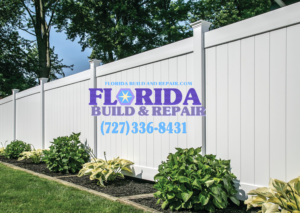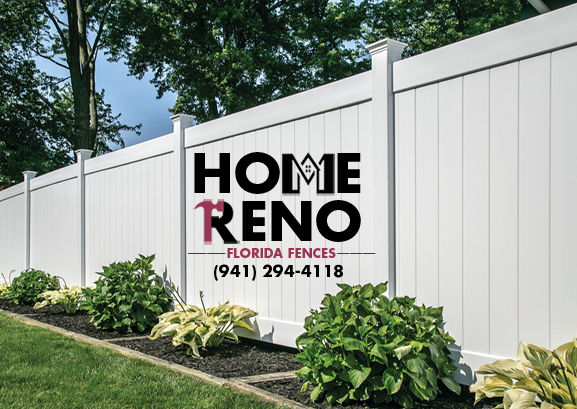Florida Fence Installation on a Budget: Affordable Options That Look Great
- Vinyl Privacy Fence Installation Clearwater, Vinyl Privacy Fence Installation Dunedin, Vinyl Privacy Fence Installation East Lake, Vinyl Privacy Fence Installation Largo, Vinyl Privacy Fence Installation Oldsmar, Vinyl Privacy Fence Installation Palm Harbor, Vinyl Privacy Fence Installation Pinellas Park, Vinyl Privacy Fence Installation St. Petersburg, Vinyl Privacy Fence Installation Tarpon Springs, Vinyl Privacy Fence Installation Westchase
The search for attractive yet affordable fencing in Florida presents homeowners with several viable options that balance cost with aesthetic appeal. Florida’s unique climate and lush landscapes create both challenges and opportunities when selecting budget-friendly fencing solutions. While chain link consistently ranks as the most economical choice at approximately $13-15 per linear foot, several other materials offer excellent value without sacrificing appearance. The average Florida homeowner can expect to spend between $1,800 and $6,000 for full fence installation, with significant savings possible through careful material selection, height considerations, and potential DIY approaches. This guide explores the most budget-friendly fence options that maintain visual appeal while withstanding Florida’s distinctive environmental conditions.
Budget-Friendly Fence Materials for Florida Homes
Chain Link: The Most Economical Option
Chain link fencing consistently ranks as the most affordable fence option available in Florida. With costs averaging $13.26 per linear foot for a standard 4-foot fence, it represents the best value for homeowners on a strict budget. This practical and wind-resistant option has several advantages beyond price:
- Excellent durability and low maintenance requirements
- Wind resistance ideal for Florida’s hurricane-prone climate
- Particularly well-suited for pet owners and securing property boundaries
- Provides security while maintaining visibility of landscaping
While chain link may not offer the inherent aesthetic appeal of other materials, it can be enhanced significantly. Many Florida homeowners use chain link as a framework for growing garden vines, creating a living fence that combines function with natural beauty. This approach transforms a utilitarian fence into a verdant boundary that complements Florida’s lush landscape.
Wood Fencing: Natural Beauty at Moderate Cost
Wood fencing represents an excellent middle ground for Florida homeowners seeking affordability without sacrificing appearance. At approximately $15.80 per linear foot for a 4-foot fence, wood delivers natural beauty at a price point significantly lower than vinyl or ornamental metals.
Wood fences in Florida typically cost between $1,800 and $6,000 for a complete installation, depending on property size and fence design. This price range makes wood accessible to most homeowners while providing several aesthetic and practical advantages:
- Natural appearance that complements Florida’s landscape
- Versatility in design, from picket to privacy styles
- Can be stained or painted to match home exterior
- Relatively quick installation timeframe (typically a matter of days)
- Moderate lifespan of 10-20 years with proper maintenance
For maximum budget efficiency, consider a wooden privacy fence. While not the cheapest initial option, wood privacy fencing generally costs less than vinyl alternatives while delivering similar functionality and a classic, attractive appearance.
Vinyl Options: Long-Term Value
At $20.39 per linear foot for a 4-foot fence, vinyl represents a higher initial investment than wood or chain link but offers exceptional long-term value. Vinyl’s durability and resistance to Florida’s humid conditions make it worth considering even for budget-conscious homeowners.
For those prioritizing both budget and aesthetics, low or picket-style vinyl fencing offers an excellent compromise. This approach reduces material costs significantly while:
- Showcasing your landscaping to neighbors
- Providing some privacy and security
- Offering protection for children and pets
- Creating an attractive boundary with clean, consistent appearance
Vinyl’s waterproof properties make it particularly well-suited to Florida’s rainy season, and its durability means replacement costs are virtually eliminated over the fence’s lifetime. When calculating long-term value rather than just upfront costs, vinyl becomes increasingly competitive with seemingly cheaper alternatives.
Cost-Saving Installation Strategies
DIY vs. Professional Installation
One of the most significant ways to reduce fencing costs is through DIY installation. According to one case study, a homeowner completed a DIY fence project for approximately $5,000 that would have cost around $15,000 if professionally installed. This represents a potential 67% savings on overall project costs.
However, DIY installation requires careful consideration:
- Proper tools and equipment are essential (post hole diggers, levels, etc.)
- Understanding of local building codes and permit requirements
- Physical capability to handle demanding labor
- Time commitment of several weekends for most properties
For those without experience, professional installation ensures proper technique and durability. Labor costs in Florida typically range from $35-$56 per hour for unskilled workers to $70-$105 per hour for skilled fence installers. Most fence companies in Florida offer free consultations and quotes, allowing homeowners to compare options before committing.
Height and Length Considerations
Fence height significantly impacts overall cost. Standard fence heights in Florida are 4, 5, or 6 feet, with each increase in height adding proportionally to material costs. Consider these cost factors:
- 4-foot height: Standard cost (baseline)
- 6-foot height: Approximately 20% more expensive
- 8-foot height: Approximately 40% more expensive than 4-foot options
For maximum budget efficiency, carefully assess your actual privacy and security needs. A 4-foot fence may be sufficient for many purposes, particularly in front yards or areas where complete privacy isn’t essential. Using taller fencing only where necessary can significantly reduce overall project costs.
Enhancing Affordable Fences for Visual Appeal
Landscaping Integration
One of the most cost-effective ways to improve a fence’s appearance is through strategic landscaping. Florida’s climate supports lush vegetation that can transform even the most basic fencing into an attractive garden feature:
- Plant flowering vines along chain link fences to create living walls
- Install wooden planters at intervals along fence lines
- Use ornamental grasses to soften fence boundaries
- Create flower beds that follow fence lines
These approaches work particularly well with chain link fencing, where vegetation can grow through the mesh to create a green barrier. However, it’s important to monitor growth to prevent overgrowth that might weaken the fence structure.
Creative Garden Fencing Solutions
For smaller areas like gardens, creative approaches can yield attractive results at minimal cost. Consider these budget-friendly garden fence ideas:
- Picket fence with repurposed wooden door for a charming “Alice in Wonderland” aesthetic
- Simple chain link reinforced with wooden posts and rails for added visual interest
- Standard posts with mesh and decorative post caps for a finished look
Garden fences typically require posts installed 27-30 inches deep, with rails at least 3 feet high from ground level. These smaller projects can serve as ideal starting points for homeowners interested in DIY fencing before tackling larger property boundaries.
Decorative Elements and Finishes
Strategic use of decorative elements can elevate the appearance of budget-friendly fencing:
- Post caps and finials add visual interest to wood and vinyl fences
- Decorative gates create focal points within basic fence designs
- Special finishes like staining or painting refresh wood fences
- Lattice tops add texture and design without significant cost
These decorative elements typically add $7-$28 per linear foot to basic fence costs, but when applied selectively to visible sections, they create a high-end appearance without the expense of premium materials throughout the entire fence line.
Florida-Specific Considerations
Climate and Environmental Factors
Florida’s unique climate presents specific challenges for fencing materials that must be considered alongside budget concerns:
- High humidity and frequent rain accelerate wood deterioration
- Hurricane-force winds require sturdy installation methods
- Salt exposure in coastal areas affects metal components
- Abundant sunshine causes fading and material degradation
These factors make certain materials particularly well-suited to Florida conditions. Vinyl’s waterproof properties make it ideal for Florida’s rainy season despite higher initial costs. Similarly, chain link’s wind resistance provides practical advantages in hurricane-prone regions while maintaining budget-friendly pricing.
Local Regulations and HOA Guidelines
Before selecting fencing materials based solely on budget, Florida homeowners should investigate:
- Local building codes and permit requirements
- Homeowners Association (HOA) restrictions on materials and heights
- Setback requirements from property lines
- Special considerations for waterfront or conservation-adjacent properties
Many Florida communities have specific fencing guidelines that may limit material choices or required design features. Consulting with local fence professionals can help navigate these requirements while maintaining budget constraints.
Conclusion: Balancing Cost and Aesthetics
Installing attractive fencing in Florida doesn’t necessarily require a premium budget. By strategically selecting materials, installation approaches, and enhancement techniques, homeowners can achieve excellent results at reasonable costs.
Chain link remains the most economical option at approximately $13-14 per linear foot, with wood fencing providing an excellent middle ground at around $15-16 per linear foot. For those prioritizing long-term value, vinyl options starting at approximately $20 per linear foot offer durability and low maintenance that may justify higher initial investment.
The most successful budget-friendly fence projects combine appropriate material selection with thoughtful design elements that enhance appearance without significantly increasing costs. Whether through DIY installation, height optimization, or creative landscaping integration, Florida homeowners have multiple pathways to create attractive property boundaries that respect financial constraints while complementing the state’s distinctive landscape and architectural styles.

The Cost of Privacy Fence Installation in Florida: What to Expect
Privacy fence installation in Florida represents a significant investment for homeowners, with costs varying widely based on materials, dimensions, location, and local regulations. This comprehensive

Hiring a Pinellas County Contractor for Privacy Fence Installation: What to Know
Finding the right contractor for privacy fence installation in Pinellas County requires careful consideration of local regulations, contractor qualifications, and material options. This comprehensive guide

Florida Fence Installation on a Budget: Affordable Options That Look Great
The search for attractive yet affordable fencing in Florida presents homeowners with several viable options that balance cost with aesthetic appeal. Florida’s unique climate and

The Do’s and Don’ts of St. Petersburg Vinyl Privacy Fence Installation
Here are the key Do’s and Don’ts for vinyl privacy fence installation in St. Petersburg: Do’s: Don’ts: By following these Do’s and Don’ts, you can

Vinyl Privacy Fence Installation in St. Petersburg : Enhancing Your Home’s Curb Appeal
Vinyl privacy fences are an excellent choice for homeowners in St. Petersburg looking to enhance their home’s curb appeal. Here’s how they can contribute to

How Long Does Vinyl Privacy Fence Installation Take in St. Petersburg?
The installation of a vinyl privacy fence in St. Petersburg can typically be completed in one to three days by a professional fence contractor. However,

Step-by-Step Fence Installation in St. Petersburg: A DIY or Professional Job
Installing a fence in St. Petersburg can be a rewarding DIY project, but it also presents challenges that might make hiring a professional more appealing.

Step-by-Step Guide to Florida Privacy Fence Installation
Privacy fences in Florida require special considerations due to the state’s unique climate, local regulations, and environmental factors. This comprehensive guide walks you through the

St. Petersburg Fence Installation for Uneven Terrain: Tips and Tricks
When installing a fence on uneven terrain in St. Petersburg, there are several effective methods and considerations to keep in mind: Terrain Assessment Before beginning

Professional St. Petersburg Vinyl Privacy Fence Installation vs. DIY: Which One Should You Choose?
Here’s a detailed comparison to help you decide between professional installation and DIY for a vinyl privacy fence in St. Petersburg: Key Considerations Factor Professional


